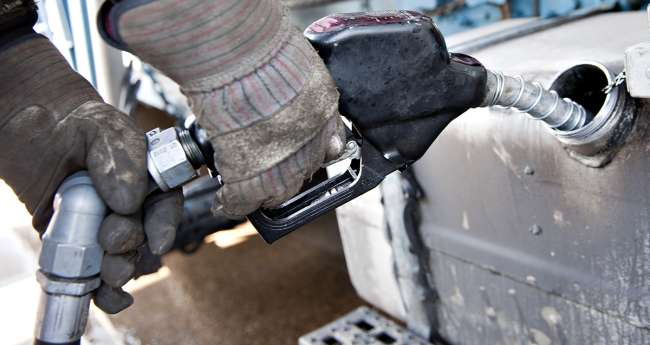Diesel Rises 1.4¢ to $2.926 a Gallon as Oil Climbs

The U.S. average retail price of diesel jumped 1.4 cents to $2.926 a gallon as oil rose above $58 a barrel before easing some despite caps on foreign production.
Diesel now costs 50.6 cents more than it did a year ago, when it was $2.42 a gallon, the Department of Energy reported Nov. 27.
Average prices for trucking’s main fuel rose in all regions except California, where the average price dipped 0.2 cent to $3.597.
In contrast, the U.S. average price for regular gasoline fell 3.5 cents to $2.533 a gallon and was 37.9 cents higher than it was a year ago, according to DOE’s Energy Information Administration.
Average gasoline prices fell in all regions as demand is typically lower in winter months.
Changing fuel prices form the continual backdrop in trucking, one carrier said.
“It is something that is kind of always in the back of our minds because it fluctuates so often,” Riley Larson, JMS Transportation Co. general manager, told Transport Topics.
The Cedar Rapids, Iowa-based company has 50 company trucks as well as about 50 owner-operators dedicated to its fleet operation, JMS Trucking Inc.
Including all trucks, JMS bought 343,964 gallons of diesel in the most recent third quarter, Larson said.
To help manage the cost, the carrier has its primary fuel-discount agreement with Pilot Travel Center, a unit of Pilot Flying J.
“We have a substantial discount with Pilot. Enough so that we strongly encourage our drivers to fuel there whenever possible,” he said. The company also has smaller discounts with three other truck stops to provide options to drivers depending on where they’ll be driving.
In addition, JMS charges its customers a fuel surcharge and returns 100% of that to the owner-operator drivers it uses.
Asked if that policy is unusual, Larson said, “I don’t know for sure but it’s probably not the norm. I think a lot of companies recoup at least a portion of the fuel surcharge [from owner-operators] — it’s is a good selling point for us, too. Obviously the owner-operators appreciate it. It’s money in their pocket.”
Also, for about eight years, JMS has been offering a weekly idle bonus for all its drivers.
“Basically, if their truck has an auxiliary power unit, their idle time for that week has to be less than 5%. If they don’t have an APU, their idle time has to less than 35%. If they meet that criterion, then they receive a 3-cent-per-mile bonus for all paid miles for that week,” Larson said.
The idle time is documented through its transportation management system from PeopleNet that for the past five years has also served as an electronic drivers’ log, he said.
Meanwhile, West Texas Intermediate crude futures on the New York Mercantile Exchange closed at $58.11 on Nov. 27, compared with $56.09 on Nov. 20.
Later in the week, the Organization of Petroleum Exporting Countries agreed to extend its oil-production cuts through 2018 as the job of rebalancing the market is not yet done, according to delegates at a ministerial meeting in Vienna, Bloomberg News reported Nov. 30.
However, oil fell after the OPEC-led coalition of major crude producers left the door open to dropping supply cuts halfway through 2018. WTI prices for January delivery fell 16 cents to $57.14 a barrel in morning trading Nov. 30.
“OPEC ministers have very clearly said that they’re extremely committed towards getting that inventory overhang down,” Amrita Sen, chief oil analyst at consultants Energy Aspects Ltd. in London, told Bloomberg. “The questions that are going to get asked now are about Russia’s involvement, which I also think is going to be very much for the full year.”
At the same time, U.S. commercial crude oil inventories fell 3.4 million barrels to 453.7 million barrels, and are in the upper half of the average range for this time of year.
Also, U.S. gross refinery inputs have been higher than the five-year range for a majority of 2017, reaching 17 million barrels the week of Nov. 24, according to EIA. But production of distillate fuel — primarily ultra-low-sulfur diesel used in transportation and to a lesser degree as heating oil — decreased, averaging 5.3 million barrels per day. Gasoline production also fell, averaging 10.2 million barrels per day.




